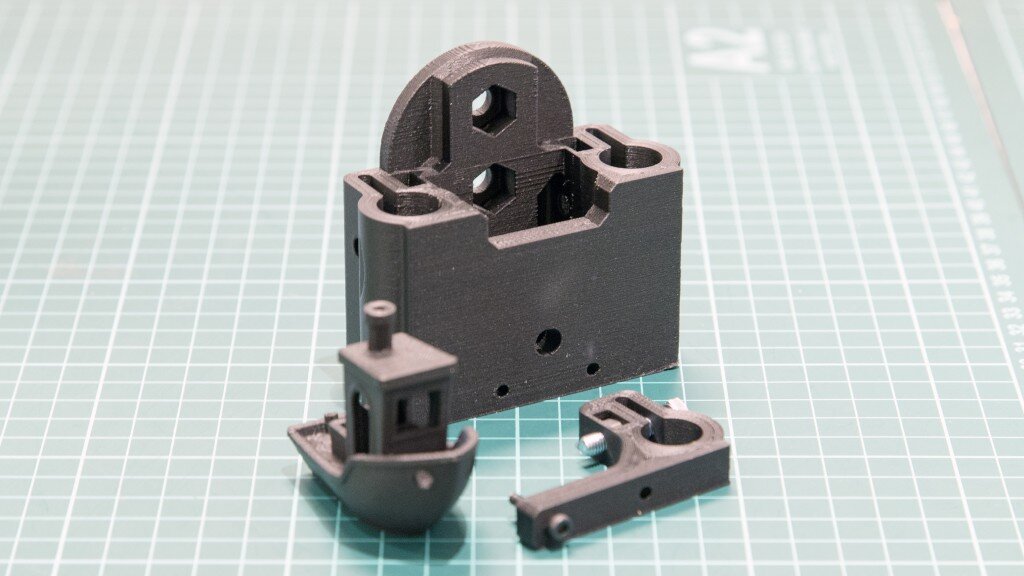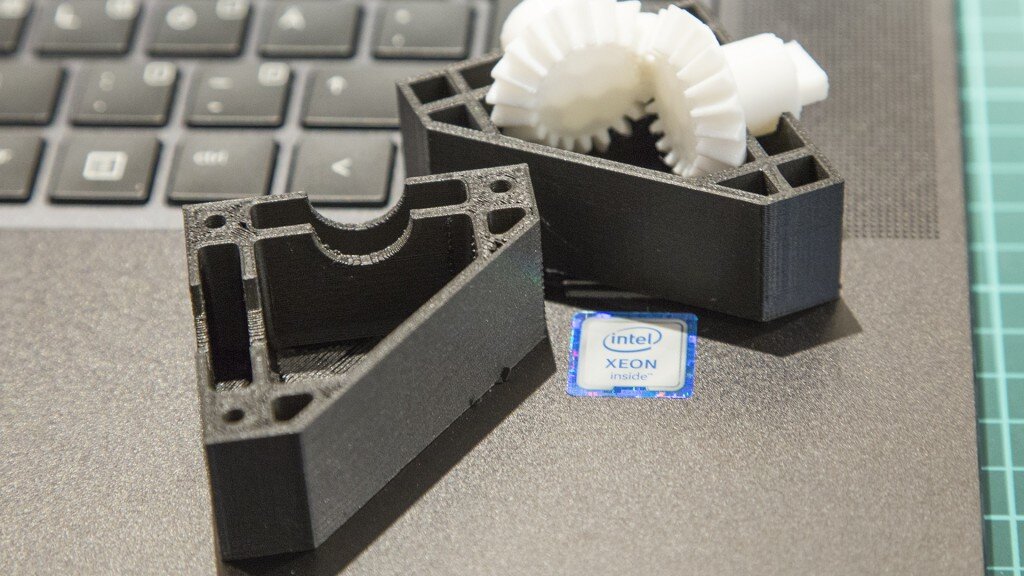colorFabb VS. Proto-pasta
Which one should you get first?
So, during the development of DSLRigger, my Open-source camera project I worked with carbon fiber filaments and got two different deliveries. I wasn’t sure on which one to use so i decided to to a proper test of them.
As you can see in the video above, the result was pretty similar. Sure, one is easier, but the other one adds some extra functionality due to it’s recipe.
I hope you enjoy the test. Drop us a comment if you have any questions at all!
The test includes the two following materials:
colorFabb XT-CF20 and Proto-pasta HTPLA – Carbon Fiber
During testings I ran the two different materials in a few different machines.
Magicfirm – ZYYX (briefly)
The parts we used for testing were mainly from my DSLRigger project, but of course we also included the 3Dbenchy benchmarking model.
The result (as you can see in the video) is very depending on the actual settings you use. For me, I fel that the Proto-pasta filament was so much easier to use and the result felt as strong as needed.
The parts i’ve printed have been very resistant to pressure and wear. Some of the parts on my camera rig is clamping rods, and the filaments both resists high pressure for long duration, even with stress involved.
ColorFabb XT-CF20 Specifications
ColorFabb XT-CF20 is a copolyester based carbon fiber composite material that is based on the unique Amphora 3D polymer from Eastman Chemical and is loaded with no less than 20% specially sourced carbon fibers suitable for 3D Printing
Extreme High Flex Modulus (6.2 GPa) / twice as stiff as PLA
Moderate strain at break (8-10%), so no extreme brittle filament, but toughness
High Glass Temp. (Tg = 80C)
Very high Melt strength
Very high Melt Viscosity
Good dimensional accuracy and stability
Low odor / Styrene Free solution
Easy processing on many platforms
High attractive matt black surface
Proto-pasta Specifications
Compared to ABS, PET, and similar Polyester materials, HTPLA-CF has:
Easier and more reliable printing
No heated bed required
Lower processing temperatures, like standard PLA
Less warping and distortion when processing
More temperature resistance* for maintaining properties to higher temperatures
Most ABS, PET, and Polyesters get soft at 80C +/- 10C
HTPLA-CF maintains properties up to 120C or more (*when heat treated)
Higher strength and better strength-to-weight ratio for stronger parts with less material
Improved surface hardness for less wear in abrasive environments
Less shrinkage and distortion for more accurate parts
Higher stiffness so parts hold their shape
Renewable biopolymer with low odor
Highly desirable black finish
HTPLA-CF, like Aromatic Coffee, is based on High Perfomance HTPLA v2.0, so it prints easily and can be heat treated for higher temperature performance with a potential Heat Deflection Temperature (HDT) in excess of 140C (285F) depending on processing. We had good results when heat treating in an oven at 110C (225F) for an hour. We recommend leaving the supports on your parts, placing them on a non-radiating surface (like glass, ceramic, or composite), and letting them cool in the oven to minimize distortion. Parts must be baked above 60C for any crystallization to occur.
Colorfabb results
Strength 90%
Flexibility (not relative) 15%
Compability (machines) 65%
Ease-of-use (settings) 50%
Adhesion to build surfaces 70%
Proto-pasta results
Strength 90%
Flexibility (not relative) 10%
Compability (machines) 75%
Ease-of-use (settings) 85%
Adhesion to build surfaces 75%










